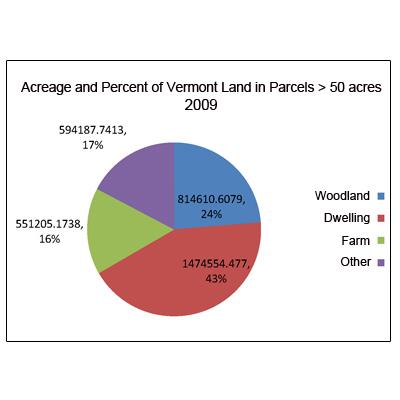Informing Land Use Planning and Forestland Conservation through Subdivision and Parcelization Trend Information

Subdivision, the breaking up of large land parcels into smaller parcels (parcelization), and conversion of forestland threaten the economic and ecological integrity of the Northern Forest. Subdivision and land conversion can negatively impact plants and animals, wildlife habitat, water quality, recreational access, and ability of forests to store carbon. They can also affect the contiguous ownership, management, and viability of forest parcels to contribute to the rural economy. While these issues have been identified for decades, subdivision trends have not been systematically tracked to inform planning or resource management.
Using state Grand List data for 2003 and 2009 and wastewater permits and well completion reports, NSRC researchers established a database of all land parcels in Vermont and compiled number of parcels by size class for each year. Data from Property Transfer Returns and the Use Value Appraisal Program helped characterize ownership, use, and value trends. Researchers selected eight towns to further analyze subdivision trends and interviewed officials in other Northern Forest states to determine their ability to conduct similar subdivision and parcel size analysis.
Much of Vermont is still composed of parcels larger than 50 acres. While this is encouraging, subdivision and parcelization are resulting in smaller parcels no longer viable for forestry and ecological functions. Land associated with dwellings is increasing, contributing to fragmentation of forestland, and land values are increasing, diminishing the likelihood that a land purchase could be justified as a viable investment in forest management. Subdivisions in the 50-100 acre range may be reducing the viability of forestland at a greater rate than subdivisions of larger parcels.
Download printable version [PDF]
Download full final report [PDF]
